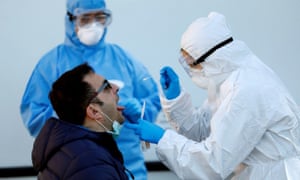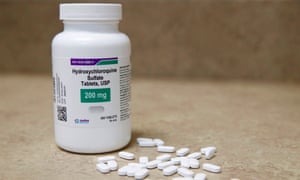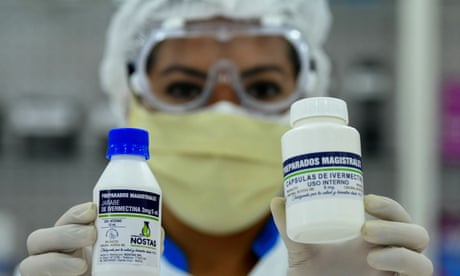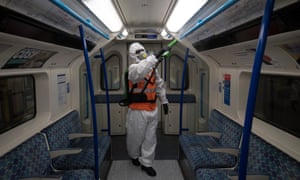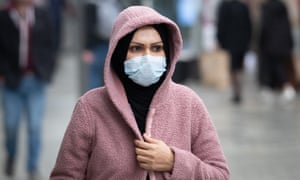Thiago Carvalho in The FT
Some years ago, on New Year’s Day, my wife and I noticed that our son, not yet two months old, was struggling to breathe — a belaboured, wheezing effort was all he could manage — and we decided to face the holiday emergency room crush. After assessing his blood oxygen levels, the pediatrician said: “Pack a bag, you will be here all week. He will get worse. Then he will get better.”
Our son had contracted something called respiratory syncytial virus, and it was replicating in his lungs. In a scenario similar to Covid-19, most healthy adults infected with RSV will experience a mild cold, or no symptoms at all. However, some unfortunate infants who contract RSV may suffer a devastating pulmonary infection. For those kids, there are no drugs available that can reliably stop, or even slow down RSV’s relentless replication in the lungs.
Instead, according to Mustafa Khokha, a pediatric critical care professor at Yale University, doctors first give oxygen and then if the child does not improve, there follows a series of progressively more aggressive procedures. “That’s all supportive therapy for the body to recover, as opposed to treatment against the virus itself,” says Khokha. Outstanding supportive care was what our son received, and the week unfolded exactly as his pediatrician predicted. (It was still the worst week of my life.)
For all the progress we have seen in 2020, a patient brought to the emergency room with severe Covid-19 will essentially receive the same kind of supportive care our son did — treatment to help the body endure a viral assault, but not effectively targeting the virus itself. The main difference will be the uncertain outcome — there will be no comforting, near-certain “he will get better” from the attending physician.
Contrast that story with a different one. On a Tuesday morning in early December, in the English city of Coventry, Margaret Keenan, just a few days shy of her 91st birthday, became the first person in the world to receive the BioNTech/Pfizer Covid-19 vaccine outside of a clinical trial. The pace of progress was astonishing. It was less than a year since, in the closing moments of 2019, Chinese health authorities alerted the World Health Organization to an outbreak of a pneumonia of unknown cause in Hubei province.
The Covid-19 pandemic has given us an accelerated tutorial on the promise and the limits of science. With vaccines, testing, epidemiological surveillance, we know where we are going, and we have a good idea how to get there. These are essentially challenges of technological development, reliant now on adequate resources and personnel and tweaking of regulatory frameworks. For other scientific challenges, though, there may be no gas pedal to step on — these include the prickly problems of arresting acute viral infection, or understanding how the virus and the host interact to produce disease. Science, as Nobel Prize-winning immunologist Peter Medawar put it, is the art of the soluble.
In March, when, incredibly, the first human vaccine trials for Covid-19 were kicking off in Seattle, the WHO launched an ambitious clinical trial to try to identify existing pharmaceuticals that could show some benefit against Sars-Cov-2. In October, the WHO declared that all four arms of its Solidarity trial had essentially failed. The search for effective antiviral drugs has not lacked resources or researchers, but in contrast to the vaccine victories, it has yet to produce a single clear success story. The concentrated efforts of many of the world’s most capable scientists, relying on ample public support and private investment, are sometimes not enough to crack a problem.
Perhaps nothing exemplifies this more clearly than what followed Richard Nixon’s signing of the National Cancer Act on December 23 1971. The act was cautiously phrased, but January’s State of the Union address declared an all-out war on cancer: “The time has come in America when the same kind of concentrated effort that split the atom and took man to the moon should be turned toward conquering this dread disease.” The war on cancer would funnel almost $1.6bn to cancer labs over the next three years, and fuel expectations that a cure for the disease would be found before the end of the decade. Curing cancer remains, of course, an elusive target. In 2016, then vice-president Joe Biden presented the report of his own Cancer Moonshot task force.
The success of the Apollo program planted the Moonshot analogy in the science policy lexicon. Some grand challenges in biology could properly be considered “moonshots”. The Human Genome Project was one example. Like the race to the Moon, it had a clear finish line: to produce a draft with the precise sequence of genetic letters in the 23 pairs of human chromosomes. This was, like the propulsion problems solved by Nasa en route to the Moon, a matter of developing and perfecting technology — technology that later would allow us to have a genetic portrait of the cause of Covid-19 in under two weeks.
The cancer context was rather different. In the countdown to the war on cancer, Sol Spiegelman, the director of Columbia University’s Institute of Cancer Research, quipped that “an all-out effort at this time [to find a cure for cancer] would be like trying to land a man on the Moon without knowing Newton’s laws of gravity.” And so it proved.
We now know quite a lot about how the body resists viral infections, certainly much more than we knew about the biology of cancer in 1971. Over 60 years ago, at London’s National Institute for Medical Research, Alick Isaacs and Jean Lindemann exposed fragments of chicken egg membranes to heat-inactivated influenza A virus. In a matter of hours, the liquid from these cultures acquired the capacity to interfere with the growth of not only influenza A, but other, unrelated viruses, as well. Isaacs and Lindemann named their factor interferon. Interferons are fleet-footed messengers produced and released by cells almost immediately upon viral infection. These molecules warn other host cells to ready themselves to resist a viral onslaught.
Viruses rely on hijacking the normal cellular machinery to make more copies of themselves and interferons interfere with almost all stages of the process: from making it more difficult for the virus to enter cells, to slowing down the cellular protein factories required to make the viral capsule, to reducing the export of newly made viral particles. Interferons are now part of our pharmaceutical armoury for diseases as diverse as multiple sclerosis and cancer, as well as hepatitis C and other chronic viral infections.
Multiple interferon-based strategies have been tried in the pandemic, from intravenous administration to nebulising the molecule so that the patient inhales an antiviral mist directly into the lungs. The results have been inconclusive. “A lot of it has to do with the timing,” says Yale immunologist Akiko Iwasaki, “the only stage that recombinant interferon might be effective is pre-exposure or early post-exposure, and it’s really hard to catch it for this virus, because everyone is pretty much asymptomatic at that time.”
This year’s scramble for effective antiviral drugs led to a revival of other failed approaches. In 2016, a team of researchers from the United States Army Medical Research Institute of Infectious Diseases in Frederick, Maryland, and the biotech company Gilead Sciences reported that the molecule GS-5734 protected Rhesus monkeys from being infected with the Ebola virus. GS-5734, or as it is more familiarly known now, remdesivir unfortunately failed in clinical trials. This was a bona fide antiviral, backed up by demonstrations that the drug efficiently blocked an enzyme used by viruses to copy their genome. Ebola was already remdesivir’s third dead-end: Gilead had previously tested GS-5734 against hepatitis C and RSV, and the results were disappointing.
In late April, National Institute of Allergy and Infectious Diseases director Anthony Fauci, a member of the White House coronavirus task force, proclaimed that the US remdesivir trials had established “a new standard of care” for Covid-19 patients. As has happened repeatedly during the Covid-19 crisis, the data backing this claim not been made public, nor had it, at the time, been peer-reviewed.
Fauci explained that the drug had no significant effect on mortality, but claimed that remdesivir reduced hospitalisation times by about 30 per cent. It was the first piece of good news in a spring marked by global lockdowns. Unfortunately, results from a large-scale trial run by the WHO released in the autumn failed to support even the limited claims of the US study (Gilead has challenged the study’s design), and the WHO currently advises against giving remdesivir to Covid-19 patients.
For those who do not naturally control Sars-Cov-2 infection, or who have not been vaccinated, the failure to repurpose or create effective antiviral agents leaves supportive care. We are only beginning to understand the interplay of this new virus and human hosts. It is also a protean affliction, as sex, age, and pre-existing conditions all affect outcomes. The single clearest way to reduce mortality remains the dexamethasone treatment for patients requiring supplemental oxygen initially reported in the UK Recovery trial. It is not a direct attack on the virus, but a way to ameliorate the effects of infection and the immune response to it on the human body. Dexamethasone is, in a very real sense, supportive care.
So what have we learned about the limits of science? First, we were reminded that spectacular successes are built on a foundation of decades of basic research. Even the novel, first-in-class vaccines are at the end of a long road. It was slow-going to get to warp speed. We learned that there are no shortcuts to deciphering how a new virus makes us sick (and kills us) and that there is no ignoring the importance of human diversity for cracking this code. Diabetes, obesity, hypertension — we are still finding our way through a comorbidity labyrinth. Most of all, we have learned an old lesson again: science is the art of the soluble. No amount of resources and personnel, no Manhattan Project, can ensure that science will solve a problem in the absence of a well-stocked toolbox and a solid, painstakingly built theoretical framework.
South Korea recorded its first Covid-19 case on January 20. Eleven days later, Spain confirmed its first infection: a German tourist in the Canary Islands. Spain and South Korea have similar populations of about 50m people. As of publication of this piece, South Korea has had 879 deaths, while Spain reports over 50,000. The west missed its moment. Efficient testing, tracing and containment of Covid-19 was a soluble technological and organisational problem. Here too, we can hear echoes of the war on cancer. The biggest single reduction in cancer mortality did not come from a miracle drug. It was the drop in lung cancer deaths, due to what we could call the war on tobacco. Perhaps Dr Spiegelman might concede that even if we don’t have a law of gravity, we do have a first law of medicine: always start with prevention.
Covid-19 has pushed science to its limits and, in some cases, sharply outlined its borders. This century’s first pandemic finds humanity, with its transport hubs and supply chains, more vulnerable to a new pathogen. But virology, immunology, critical care medicine and epidemiology, to name a few, have progressed immeasurably since 1918. Unfortunately, in a public health emergency, the best science must be used to inform the best policies. In the seasonal spirit of charity, let us say that that has not always been the case in our pandemic year.

